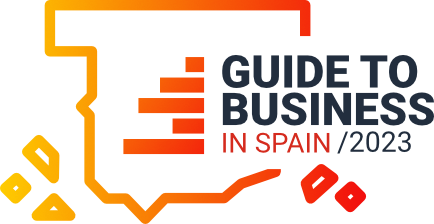- #
- 1
Spain: An attractive country for investment
- 2
Setting up a business in Spain
- 3
Tax System
- 4
Investment aid and incentives in Spain
- 5
Labor and social security regulations
- 6
Intellectual property law
- 7
Legal framework and tax implications of e-commerce in Spain
-
Downloads
- AI
Company and Commercial Law
- AII
The Spanish financial system
- AIII
Accounting and audit issues

- Introduction
- What is intellectual property?
- What is the registration principle?
- What is the territoriality principle?
- How to overcome the limits of territoriality?
- What are the most important conventions signed by Spain?
- Can intellectual property rights be market?
- What changes are expected in the spanish intellectual property legislation?
- Trademarks
- What is a trademark?
- What factors need to be borne in mind to register a trademark in Spain?
- What are the ways of registering a mark in Spain?
- How do you obtain a Spanish trademark?
- Grounds for refusal of a trademark application
- How long does Spanish trademark registration last?
- What is an international Trademark?
- How to obtain an international trademark?
- Who can file an international trademark?
- What is an EU trademark?
- Who can file an EU trademark?
- How to obtain an EU trademark?
- What checks does the EUIPO conduct when it receives the application?
- EU… and international trademark?
- How long does an EU trademark last?
- Protection of inventions in Spain
- Plant varieties
- Industrial designs
- What are industrial designs?
- What is novelty and individual character?
- How can you obtain protection in a design?
- How do you obtain a Spanish design?
- How long does a Spanish design last?
- How do you obtain a Community design?
- How long does a Community design last?
- What does an unregistered Community design consist of?
- How do you obtain an international design?
- Topographies of semiconductor products
- Copyright
- Unfair competition
- Trade secrets
- Action against infringement of intellectual property rights
- Appendix I – Reference to official fees for 2023
- Appendix II – Intellectual property conventions
6Topographies of semiconductor products
6.1 What are topographies of semiconductor products?
Spanish legislation grants a period of protection of 10 years for topographies of semiconductor products, (integrated semi-conductor circuits known as “chips”). The subject-matter of protection is not the integrated circuit itself but the way in which it is physically mounted, that is, the physical arrangement of all its elements.
6.2 How do you obtain topographies of semiconductor products?
In order for the SPTO to grant protection of the semiconductor product, the topography must be the result of the creator’s own intellectual efforts and must not be commonplace in the semiconductor industry, that is, the law requires originality and creativity5.
5 The governing provisions are to be found in Law 11/1988, the result of the transposition to Spanish law of Directive 87/54/EEC of December 16, 1986.


